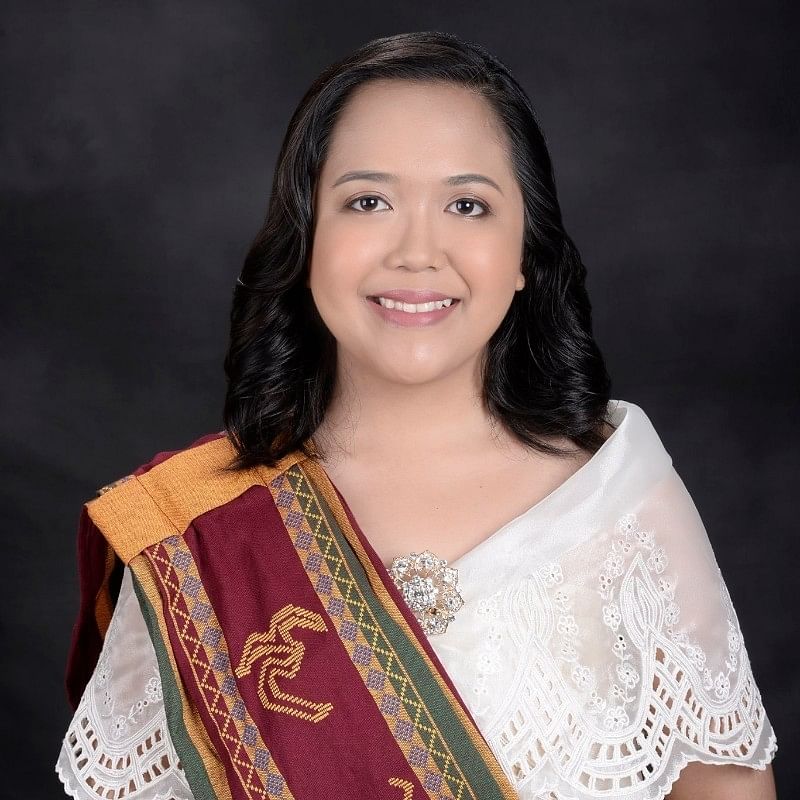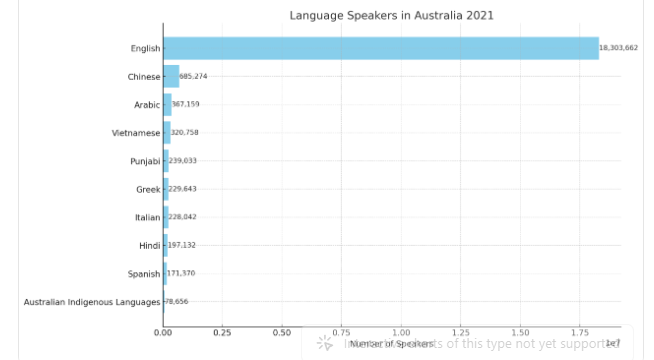Translate 100,000 words for free at MachineTranslation.com by Tomedes
Languages Spoken in Australia
Australia boasts a diverse and vibrant linguistic landscape, reflecting its rich cultural mosaic and historical influences. As a language enthusiast, I'm here to guide you through the myriad languages that paint the Australian social fabric.
What language is spoken in Australia?
In Australia, English is the de facto official language of Australia. While it isn't designated officially by law just like in the US, English is predominant in government, business, and daily life. Australian English is unique, characterized by its distinctive accent and slang, setting it apart from other forms of English globally. It’s estimated that there are about 18 million English speakers in Australia, which is 76% of the entire population.
How many languages are spoken in Australia?
Australia's linguistic diversity is staggering, with over 300 languages spoken across the continent. This includes a mix of indigenous languages, as well as languages brought by immigrants from Europe, Asia, and beyond, reflecting the nation’s immigration history and indigenous heritage.
Read more: European Languages: Exploring the Languages of Europe
Languages in Australia
Australia's linguistic diversity is marked by a dynamic mix of global and indigenous languages, each contributing its own cultural richness.
Mandarin
Mandarin is now one of the principal languages of Australia, fueled by large Chinese communities in major urban areas such as Sydney and Melbourne. There are around 685,274 Mandarin Chinese speakers in Austalia. These communities have established Mandarin as a key language in local business, education, and media, reflecting the strong socio-economic ties between Australia and China.
Arabic
Arabic has grown significantly in usage within Australia, supported by a growing Middle Eastern diaspora. It’s estimated that there are 367,159 Arab speakers. This community enriches Australian society with cultural and educational exchanges, making Arabic a common language in several suburbs across major cities.
Vietnamese
Vietnamese is another critical language in Australia, spoken by a large Vietnamese community, particularly in regions like Cabramatta in Sydney and Footscray in Melbourne. It plays a significant role in community media and local businesses. Currently, there are 320,758 Vietnamese speakers.
Italian
Italian was once more widely spoken and remains a key part of Australia’s cultural fabric, especially among older generations of Italian Australians. Even though there are only 228,042 Italian speakers, this language continues to influence Australian cuisine, cultural festivals, and education.
Greek
Greek is notable for its historical and ongoing influence, especially in Melbourne, which boasts one of the world's largest Greek-speaking populations outside of Greece. Despite only 229,643 Greek speakers, this language remains vibrant in community schools, churches, and media, continuing to play a pivotal role in cultural and familial contexts.
These languages reflect not only the individual stories of migrants and indigenous peoples but also the broader narrative of Australia as a nation built on diverse linguistic and cultural foundations.
Read more: Asian Languages
Indigenous languages
Australia's indigenous languages are not only means of communication but also vital components of cultural identity for Aboriginal and Torres Strait Islander peoples. Here are five noteworthy languages:
Warlpiri
Warlpiri is spoken in the Northern Territory, particularly in the Tanami Desert. It is one of the stronger indigenous languages with robust educational programs and media in the language.
Kala Lagaw Ya
Kala Lagaw Ya is native to the western Torres Strait Islands. It is distinctive from mainland Aboriginal languages and is closely linked to the maritime culture of its speakers.
Yolŋu Matha
Yolŋu Matha refers to a group of closely related languages spoken in northeastern Arnhem Land. It has several dialects and is featured in local schools and broadcasting.
Pitjantjatjara
Pitjantjatjara is a Western Desert language known for its use in the famous Anangu Pitjantjatjara Yankunytjatjara (APY) lands. It is one of the few Aboriginal languages taught in schools and used in governmental contexts.
Tiwi
Tiwi is spoken on the Tiwi Islands off the coast of the Northern Territory. It is unique among Australian indigenous languages and is central to the cultural identity of the Tiwi people.
These languages, among others, form an integral part of Australia's cultural heritage, with ongoing efforts to preserve and revitalize them through community programs and educational initiatives.
Endangered and extinct languages
Sadly, many indigenous languages are at risk or have already disappeared. Efforts by communities and linguists aim to revive and preserve these languages as crucial elements of Australia’s cultural identity.
Endangered languages of Australia
Dyirbal
Dyirbal, spoken in North Queensland, is known for its complex grammar but is now only spoken by a few elderly individuals.
Yawuru
Yawuru, from the Broome region in Western Australia, has very few fluent speakers left, with revitalization efforts underway to teach it in local schools.
Adnyamathanha
Adnyamathanha is spoken in the Flinders Ranges area of South Australia. It faces serious threats despite efforts to document and revitalize the language.
Extinct languages of Australia
Tasmanian
The various Tasmanian languages, once spoken by the indigenous people of Tasmania, are considered extinct with no fluent speakers and very limited documentation.
Yabem
Yabem was one of the northern Australian languages with no known speakers left today, largely undocumented.
Woiwurrung
Woiwurrung, the language of the Wurundjeri people of the Melbourne area, is no longer spoken actively, although efforts are being made to reconstruct it from historical sources.
Dialects spoken in Australia
Australian English itself varies, with noticeable differences in accent and vocabulary between regions such as Queensland, New South Wales, and Victoria. Indigenous languages also exhibit dialectal variations, which are vital in the cultural identity and practices of Aboriginal communities.
Influence of other Languages
Australia's linguistic tapestry has been shaped significantly by its immigration patterns. Post-World War II migrations brought waves of Greek, Italian, and Vietnamese speakers, among others. These languages have influenced Australian slang and everyday language, adding to the cultural richness.
Language education and policy
Language education in Australia is designed to embrace the country's vast multicultural makeup, offering an array of programs that reflect its diverse linguistic landscape. Educational institutions frequently provide language programs in both English and various community languages, including Mandarin, Italian, and Greek, catering to the linguistic needs of their diverse student populations.
The Australian government plays a supportive role in this educational diversity, implementing various initiatives aimed at preserving languages, especially indigenous ones. These efforts include funding for language classes, the development of educational materials in multiple languages, and support for cultural heritage projects that help maintain language use within communities. This strategic approach helps to sustain and celebrate Australia's rich linguistic diversity.
Languages in media and technology
Australia's linguistic diversity is vividly reflected in its media and technology sectors. Networks like SBS pioneer in multilingual broadcasting, offering programs in over 60 languages which facilitates ongoing language preservation and fosters extensive cultural exchange.
Moreover, technological advancements have significantly enhanced accessibility to resources like language learning and translation applications. These tools are pivotal in supporting individuals across Australia who wish to learn new languages or improve their proficiency, thus bridging communication gaps and promoting a multicultural understanding within the community.
Conclusion
The languages spoken in Australia are as diverse as its landscapes. From bustling cities where dozens of languages mingle daily to remote communities where ancient tongues are spoken, Australia’s languages are a testament to its complex cultural history and dynamic present. As we look to the future, the continued support for linguistic diversity and education will ensure that the voices of all Australians, past and present, are heard and cherished.
As you explore the rich linguistic landscape of Australia, think about how local expertise can help your business grow. Team up with Tomedes to navigate the diverse languages and cultures of this dynamic market. Connect with Tomedes today to make sure your business communicates effectively and resonates with all Australians!

By Clarriza Heruela
Clarriza Mae Heruela graduated from the University of the Philippines Mindanao with a Bachelor of Arts degree in English, majoring in Creative Writing. Her experience from growing up in a multilingually diverse household has influenced her career and writing style. She is still exploring her writing path and is always on the lookout for interesting topics that pique her interest.
Share:
GET IN TOUCH
Need expert language assistance? Inquire now
Try free AI tools to streamline transcription, translation, analysis, and more.
Use Free Tools
Post your Comment